Weed Management
Originally written February 1, 2006 | Last updated
August 21, 2014
Successful weed management requires an understanding of weed biology
Successful weed management requires an understanding of weed biology and
of weed management strategies.
Ineffective weed control can have serious consequences
Reduced crop yields weeds compete for light, moisture, and nutrients
Reduced crop quality weed seeds and foreign material can reduce the market
grade of crops weed seeds and foreign material may be moist and cause storage problems
Weed Biology
Weed and Crop Life Cycles
Weed Seeds
Weed Interference
Weed Management Strategies
Prevention
Eradication
Control
Methods of Weed Control
Cultural weed control
Mechanical weed control
Biological weed control
Chemical weed control: Some chemicals have carryover problems: Atrazine (AAtrex),
Lasso
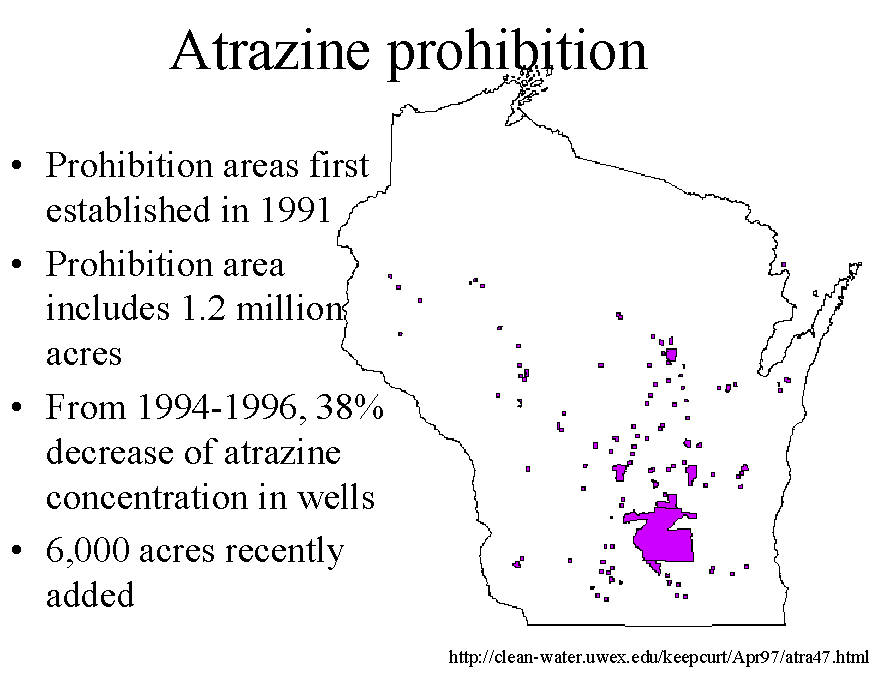
Herbicide Application Methods
Preplant
Preemergence
Postemergence
Keys to Successful Weed Management with Herbicides
Weed ID is Key
Herbicide selection
Herbicide application
Hybrid/Variety Interactions with Herbicides
Most effective weed control = Combination of cultivation and chemicals
Timing of Weed Control
Knezevic et al. 2003 (Nebraska)


Species Shifts
What will happen to RR technology?
Volunteer corn in corn
and soybeans fields will affect yields if density levels are high and left
uncontrolled. In soybeans fields there are herbicides effective in
controlling glyphosate or non-glyphosate resistant corn plants. In
corn it becomes more problematic if the volunteer plants from the previous
crop are glyphosate resistant and growing in a glyphosate resistant field.
Cultivation is the only
practical means available to remove these volunteer plants. The yield
impact can approach 13% under extremely high density levels. Studies
from Iowa State show a 1.3% yield loss with a volunteer plant every ten feet
of row. In many fields there are clumps and individual plants
scattered about. University studies show 0.5% yield loss with 500
volunteer plants per acre up to 1.5% loss at 2000 plants per acre. If
there are clumps in the field, then yield losses range from 1.2% per 500
clumps per acre to 2.4% per 1000 clumps per acre. An acre is 208.7
feet by 208.7 feet.
Cultivation
- Most farmers cultivate row crops at least once, many cultivate twice
- Research shows cultivation may increase yields as much as 10-20% on soils that tend
to crust
- Cultivation breaks up crust and improves rainfall infiltration
- Cultivation dries out upper 2-3 in of soil more rapidly, but it also breaks up capillary
pathways that extend into the soil
- Cultivation stirs the soil, which can increase microbial oxidation and release of
nutrients
- Breaking a crust to increase water infiltration can reduce soil erosion
Chemicals
Banding herbicides at planting is an excellent practice
- Offers protection in a wet spring
- Banding saves dollars
- Usually use ½ to 1/3 as much chemical in comparison with broadcasting
- Banding with the planter controls weeds in the row, cultivation later controls weeds
between rows
Broadcasting
- Uniform weed control throughout a field, but more chemical applied/a means more
expense
- Many herbicides (except "burn down" or contact herbicides) lose effectiveness
in a dry spring
- Herbicide management is very important
- On continuous corn, many farmers rotate herbicides from year to year
- Heavy rates of some herbicides may damage corn
- Hybrids may differ in tolerance
- Environmental conditions important
Weed Control and Tillage Systems
- Reducing or eliminating tillage can alter weed populations
- Perennial weeds are often more prevalent in no-till systems than in moldboard and
chisel systems
- Higher rates of chemicals are often required as tillage is reduced because residue
ties up chemicals
- Uniform incorporation/distribution of herbicides is usually more difficult as amount
of surface residue increases
Weed Control and Crop Rotations
Continuous corn: Weed control in reduced till fields can be as dependable
as in conventional fields since the same herbicides and mechanical cultivation can
be used
Corn-soybean rotations: If soybean was the previous crop in a reduced tillage
system, much of the surface residue is buried with the first tillage operation.
Therefore, uniform incorporation of herbicides is not much of a problem when following
soybeans
No till: Weed control depends entirely on herbicides. A higher level of herbicide
management is required
- Herbicides requiring incorporation are not used
- Both preemergence and postemergence herbicides are required
Herbicide Resistance
List of herbicide resistance weeds
http://www.weedscience.org/in.asp
(from Robert Gunn)
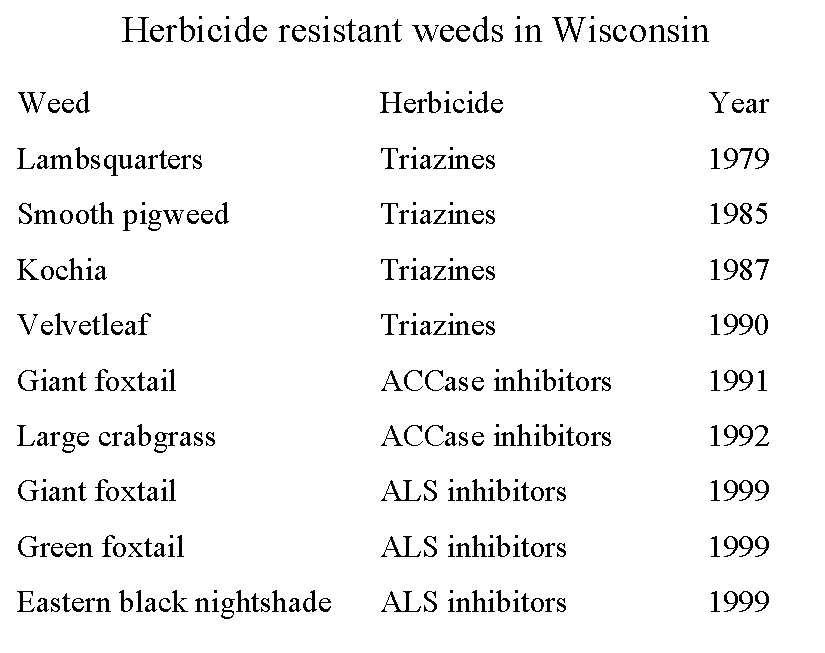

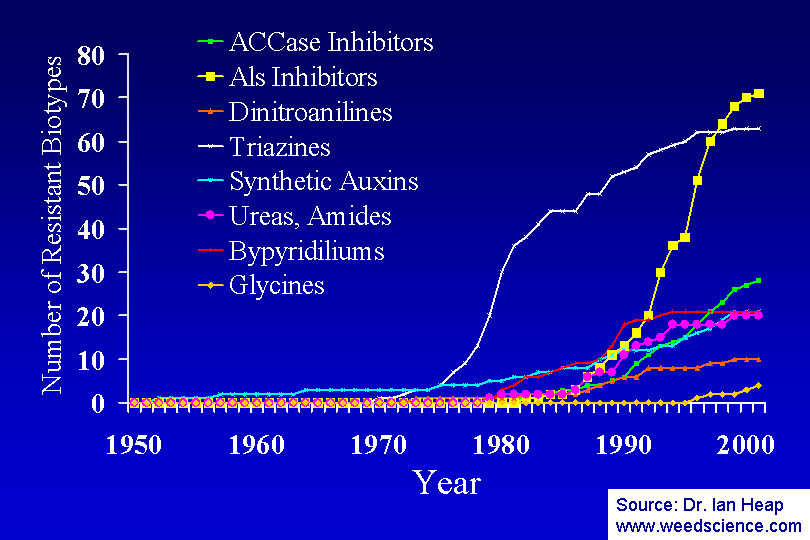
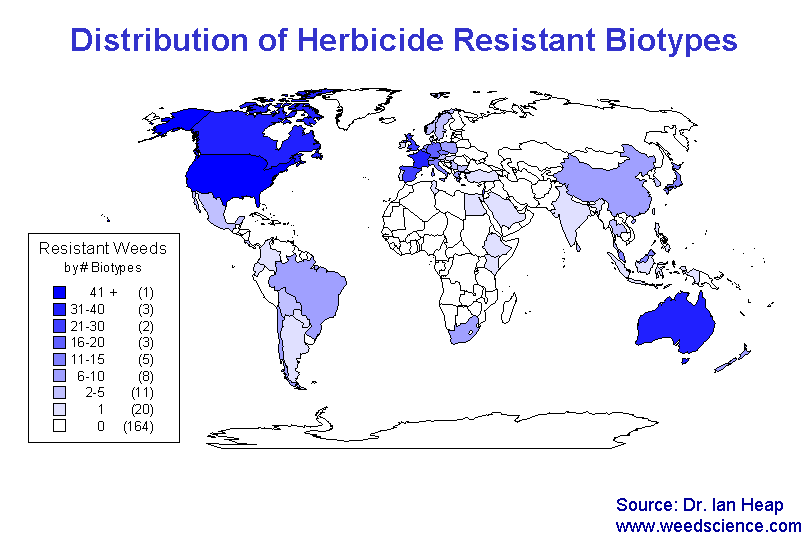
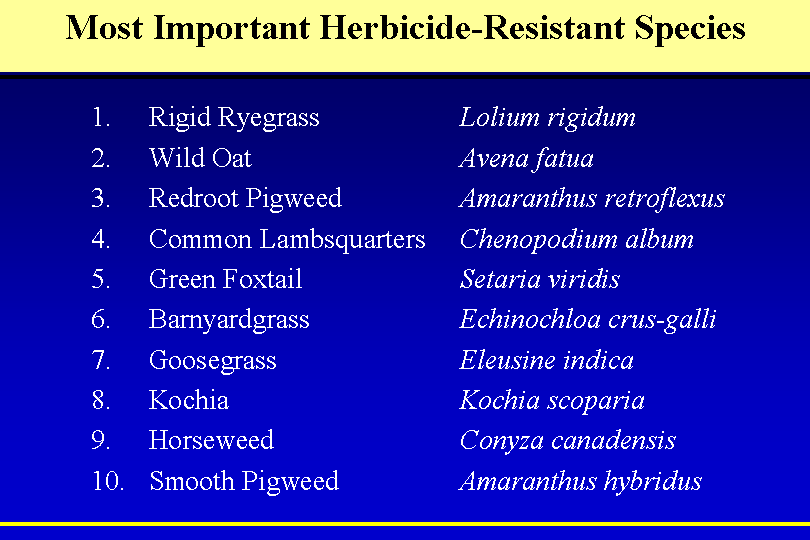
-
Herbicide Resistant Crops
-
Herbicide Resistant Weeds
-
Management of Resistance
Weeds cause harvest problems
- Lower stems of some weeds are very thick and woody at maturity (velvetleaf, sunflower)
can be tough on a combine
- If there are many weeds, and the weeds are tough, may have to wait for a killing
frost to combine soybeans
- May have to operate the combine at a reduced ground speed, and at the same time
increase combine rpm's
- Too much weed trash may plug the sieves, and soybeans may be lost out of the back
end of a combine
Problem weeds in WI
annual grasses (barnyard grass, crabgrass, downy brome, fall panicum, foxtails,
longspine sandbur, prairie cupgrass, shattercane, wild proso millet, witchgrass,
wooly cupgrass)
large-seeded broadleaf weeds (cocklebur, common sunflower, devil's claw, eastern
black nightshade, puncture vine, smartweed, velvetleaf, Venice mallow)
perennial grasses (johnsongrass, quackgrass, wirestem muhly)
annual broadleaves (common ragweed, lambsquarter, Pennsylvania smartweed,
redroot pigweed, waterhemp)
perennial broadleaves (field bindweed, hedge bindweed, swamp smartweed, woolyleaf
bursage)
small-seeded broadleaf weeds (kochia, lambsquarters)
How to calibrate a sprayer
Calibrating a boom sprayer is not as difficult as it sounds. Although there are
many methods to use, the method described below for broadcast applications is simple
and requires few calculations.
To calibrate your sprayer you need a measuring tape, a watch capable of indicating
seconds, and a measuring jar graduated in ounces. A pocket calculator also will
be handy. What follows is a calibration process:
- Fill at least half the tank with water.
- Run the sprayer, inspect it for leaks, and make sure all vital parts function properly.
- Measure the distance in inches between the nozzles. Then measure an appropriate
distance in the field based on the nozzle spacing (204, 136 and 102 ft for nozzle
spacings of 20, 30 and 40 inches of nozzle spacing, respectively).
- Drive through the measured distance in the field at your normal spraying speed,
and record the travel time in seconds. Repeat this procedure and average the two
measurements.
- With the sprayer parked, run the sprayer at the same pressure level and catch the
output from each nozzle in a measuring jar for the travel time required in Step
4.
- Calculate the average nozzle output by adding the individual outputs and then dividing
by the number of nozzles tested. If an individual sample collected is more than
10 percent higher or lower than the average nozzle output rate, check for clogs
and clean the tip, or replace the nozzle.
- Repeat steps 5 and 6 until the variation in discharge rate for all nozzles is within
10 percent of the average.
- Then, the final average output in ounces is equal to the application rate in gallons
per acre (Average output in ounces = Application rate in GPA).
- Compare the actual application rate with the recommended or intended rate. If the
actual rate is more than 5 percent higher or lower than the recommended or intended
rate, you must make adjustments.
- You can start the adjustments by changing the pressure. Lowering the spray pressure
will reduce the spray delivered; higher pressure means more spray is delivered.
Don't vary from the pressure range recommended for the nozzles used.
- You also can correct the application error by changing the actual travel speed.
Slower speeds mean more spray is delivered; faster speeds mean less spray is delivered.
- If these changes don't bring the application rate to the desired rate, then
you may have to select a new set of nozzles with smaller or larger orifices.
- Recalibrate the sprayer (repeat steps 5 through 12) after any adjustment.
Further Reading
To purchase hard copies of these publications, go to
The UWEX Learning Store
Pest Management in Wisconsin
Field Crops UWEX Bulletin A3646
Scouting Corn--A Guide for Wisconsin Corn Production
UWEX Bulletin A3547
Protecting Wisconsin's Resources through Integrated Weed
Management UWEX Bulletin A3690
Herbicide persistance and carryover UWEX Bulletin
A3819
Avoiding Herbicide Resistance in Weeds UWEX Bulletin
A3615
Corn and Soybean Herbicide Chart
Herbicide Mode of Action Key for
Injury Symptoms
IPM Quick Guide: Troublesome Weeds of Wisconsin
Wisconsin Integrated Crop Management Manual:
Intro |
Alfalfa |
Corn |
Soybean |
Wheat |
Nutrients |
Weeds
Pest Management Fast Facts
Protecting Resources with Integrated Weed
Management
Reduced Herbicide Rates in Corn UWEX Bulletin
A3563
Strategies to reduce risk of glyphosate
resistance
Wisconsin 2-pass Weed Control Program